ZetaTalk Newsletter as of November 17, 2024
Draft ZetaTalk Newsletter for Sunday November 17, 2024. Newsletters can be found in the Archives by Friday, also. (http://www.zetatalk.com/newsletr/index.htm)
2024 Election
Before the polls opened on November 5, various opinions on who would win emerged. Who was right? Highly reliable Nate Silver of 538.com gave President Trump a 55% chance of winning, vs 45% for Kamala. He also revealed how the erroneous polls being spouted by the Democrat controlled media were generated. Note he used the F word 3 times in print, he was so angry at these games.
- Polling Nostradamus Nate Silver says Others are Lying about Election Forecasts
November 1, 2024
https://www.dailymail.co.uk/news/article-14027247/Polling-Nostradamus - While he says it's a 55% chance Donald Trump wins vs. 45% for Kamala Harris, what pollsters have been doing in the run-up to the election has left him unsettled. He claims that many surveys, including Emerson College, are doing something called 'herding' - or using existence poll results to impact new polls - to keep producing close polls with one candidate or the other up by one point. 'In fact, I kind of trust pollsters less, they all, every time a pollster [says] 'Oh, every state is is just +1, every single state's a tie. No! You're f***ing herding! You're cheating! You're cheating! 'Your numbers aren't all going to come out at exactly 1-point leads when you're sampling 800 people over dozens of surveys. You are lying! You're putting your f***ing finger on the scale! Every pollster except for the New York Times is 'just f***ing punting on this election for the most part'
BRICS weighed in on the likely winner, showing their expected Electoral Map. Prior to the election, they predicted that President Trump would be the winner with 287 electoral votes, with only Michigan and Wisconsin among the swing states lost to Kamala. But President Trump did win Wisconsin and Michigan, for an eventual total of 312 Electoral Votes to 226 for Harris.
Joe Rogan endorsed President Trump. The former President of Brazil endorsed President Trump. Peckerwood in the UK was predicting that “God wins” when President Trump wins. Elon Musk was as would be expected endorsing President Trump, and anticipating a win.
- Trump Wins Over Swing Voters with Joe Rogan Interview: Analysis
October 28, 2024
https://www.newsweek.com/trump-joe-rogan-podcast-swing-voter-positive - Rogan's show is the most watched podcast in the world. It has 14.5 million Spotify followers and 17.5 million YouTube subscribers. The episode with Trump racked up more than 26 million views on YouTube in the first 24 hours.
Washington DC was boarding up in anticipation of Kamala hopefuls being disappointed, which they anticipate. Then election day began.
- Downtown DC Businesses Board up Windows, Doors ahead of Election Day
November 4, 2024
https://www.fox5dc.com/news/downtown-dc-businesses-board-up-windows - As D.C. works to increase safety measures ahead of Election Day, people are also doing what they can to keep their businesses safe by boarding up their glass windows and doors.
Some of the business owners who spoke with FOX 5 said it’s something they have to do in case violence breaks out in the District.
- Trump vs. Harris: Cities across US Board up Ahead of Election
November 4, 2024
https://www.foxnews.com/us/trump-vs-harris-cities-across-us-board-up - Business owners across the United States are boarding up their windows in preparation for potential post-election fallout. On the other side of the country, business owners in Portland, Oregon, who were hit hard by violence following the 2016 election and protests sparked by the death of George Floyd in 2020, are also preparing for potential riots.
Election night shows Nate Silver correct in that the polls being reported by the Democrat controlled Main Stream Media were way too generous to Kamala. Their skew was likely to condition the public so that when Kamala won via election fraud, the public would say “well, the polls did predict …”. Trump won in all the Swing States by a comfortable margin. But the Democrats clearly expected their election fraud to succeed, as it had in 2016. Having poll watchers paid off. It was at midnight on election night that Pennsylvania put President Trump over the top.
- Trump Claims ‘Magnificent’ Victory over Harris
November 6, 2024
https://insiderpaper.com/harris-or-trump-long-lines-of-voters-in-te... - Donald Trump claimed a “magnificent” victory over Kamala Harris in the fight for the presidency as results put him on the verge of one of the most stunning comebacks in US political history. “This is a magnificent victory for the American people that will allow us to make America great again,” the 78-year-old told cheering supporters at his campaign headquarters in Florida. In a further blow to Democrats, Trump’s Republican Party also seized control of the Senate, flipping two seats to overturn a narrow Democratic majority.
- Dancing Trump Supporters Revel in Victory Speech, Democrats Despondent
November 6, 2024
https://www.newsmax.com/us/victory-maga-gop/2024/11/06/ - It was a far cry from an event for Kamala Harris at Howard University, where supporters of the Democrat trudged home in the dark Washington night after the campaign announced the vice president would not be speaking on election night. In Washington, Howard University, Harris's alma mater and where she had been set to spend election night, was left strewn with empty fencing as crowds cleared out.
- Campaign Official: Harris Will Not Address
November 6, 2024
https://www.newsmax.com/politics/kamala-harris-campaign-cedric-rich... - Both North Carolina and Georgia were called for Republican nominee Donald Trump and with Harris lagging behind in Pennsylvania and all three so-called Blue Wall states. Trump was leading Harris by 3.3 points in Pennsylvania with 90% of the precincts reporting. He was also leading in Michigan by less than 2 points and Wisconsin by more than 4 points.
Not only did President Trump ride to victory, the Senate and House came under Republican control too. It was a sweeping down ballot victory. President Trump won the Electoral Vote of 270 needed to win and the Popular Vote too. Where cities traditionally are Democrat strongholds, rural areas traditionally vote Republican.
Droop Storms
During these times of more aggressive Plate Movements, stretched land is often pulled so taut that it droops. Whether land or sea, this area experiences lower altitude and thus experiences a void in the air above the droop. Of course low air pressure is what causes storms to form when the higher air pressure roars in and clashes. The Africa Roll predicted by the Zetas is in process, and is ripping open the Mediterranean at Gibraltar and along the border of the Eurasian and Africa Plates.
- Subtropical Storm Patty Forms in Northern Atlantic, no Impacts to Florida
November 2, 9:50 ET
https://www.npr.org/2024/11/02/nx-s1-5176508/spain-valencia-chiva-f... - Subtropical Storm Patty has formed overnight near The Azores in the northern Atlantic Ocean, according to the National Hurricane Center.
ZetaTalk Prediction 1/1/2011: The Straits of Gibraltar will widen by 125 miles, as Africa drops, and Morocco will move 50 miles further east.
ZetaTalk Prediction 12/16/2010: Why would the floor of the Mediterranean just above Algeria be more vulnerable than other areas during this roll? The border of the African Plate slices across northern Algeria, and thus when the plate rolls and drops, the Mediterranean floor there will suddenly find itself unsupported. Where the land mass housing Morocco and Algeria will not lose elevation, in the main, retaining its floatation strength to ride on the magma beneath, the floor of the Mediterranean is of a different composition. It will sink there, unsupported on the African side where the plates will pull apart.
Is this what caused the sudden emergence of sub-tropical storm Patty in the Atlantic on the same day that Valencia was devastated by record rainfall?
- Satellite Images Show the Devastation from Spain's Deadly Floods
November 2, 2024
https://www.npr.org/2024/11/02/nx-s1-5176508/spain-valencia-chiva-f... - Across Valencia, areas exceeded 11 inches of rain. One area that was particularly hard hit was the town of Chiva near Valencia, which accumulated nearly 20 inches in the span of 8 hours — the equivalent to what it usually receives in an entire year.
ZetaTalk Confirmation 11/2/2024: On November 2, Valencia, Spain had a massive rain storm that has killed hundreds. This was caused by drooping land above Gibraltar, which is ripping open during the Africa Roll. We have predicted that Africa will move 50 miles to the East during this process, and the renting open of the border between Africa and Eurasia at Gibraltar will open a void that will create a low pressure area, inviting rain storms. Sub-Tropical storm Patty suddenly appeared on November 2 at the quad-plate junction where the Africa Plate, the Eurasia Plate, and the SE Portion and Mainland Portion of N America meet. Patty did not cause the storm, the drooping land caused Patty.
Saving Seed
Fall is one of the best times to collect dried seed. The husks have not broken open to spill their seed as yet, nor has the ground frozen so that biennials needing to Winter over in a Root Cellar can be collected. Stocking food is not enough! You need to be prepared to grow and gather your own, and most importantly, you need to know how to save seed. Get a good book on this, such as Seed to Seed, and practice. Mother Nature wants her seeds dry and cool, so most seed only needs that preparation and protection. Many seeds will not sprout unless gathered from a ripe fruit, so those peppers and squash and melons should be ripe before harvesting. Very ripe, almost to the point of rotting. Tomatoes too, need to have white mold eat away their slime, or the seed thinks it is still in the tomato and simply won’t sprout!
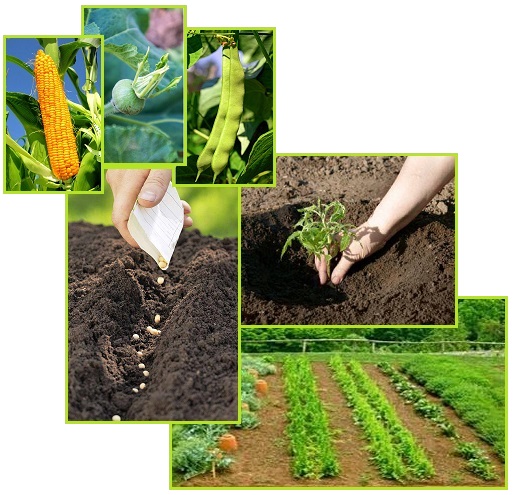
Propagating annuals like lettuce or Corn or Beans is relatively easy. Just set aside a portion of your crop for seed production, letting it fully mature, and collect the dry seeds. But half our food supply comes from biennials, like Cabbage and Onions and Carrots, which insist on sleeping over during a dormant period before going to seed. Some edibles only require establishing a perennial patch, like Asparagus or Berries or planting an Apple tree. Let’s start with the easy ones.
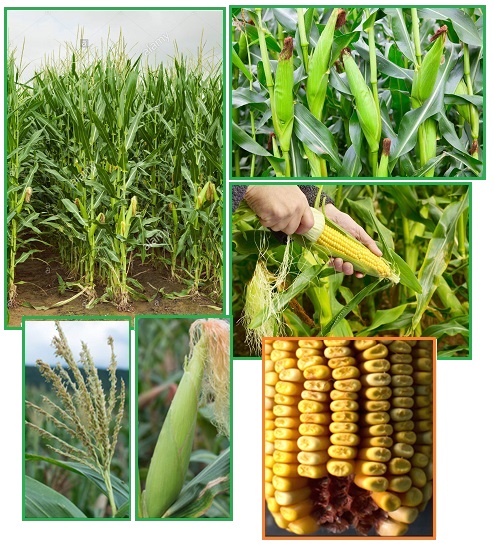
Corn kernels are perhaps the easiest to harvest. All one needs to do is let a couple stalks of Corn live on past harvest time, until the Corn dries fully. The dryer the better. Farmers check their Corn fields for this, as they don’t want moldering Corn in their silos nor do they want the expense of drying it indoors. Corn is an easy plant to grow, fertilized by the wind which blows the pollen from the tassels down across the silk of neighboring Corn plants. Corn is known as a feeder crop, needing a lot of fertilizer - manure or ashes from wood burning stoves, and thus farmers alternate with Soy Bean crops which bind nitrogen to the soil.
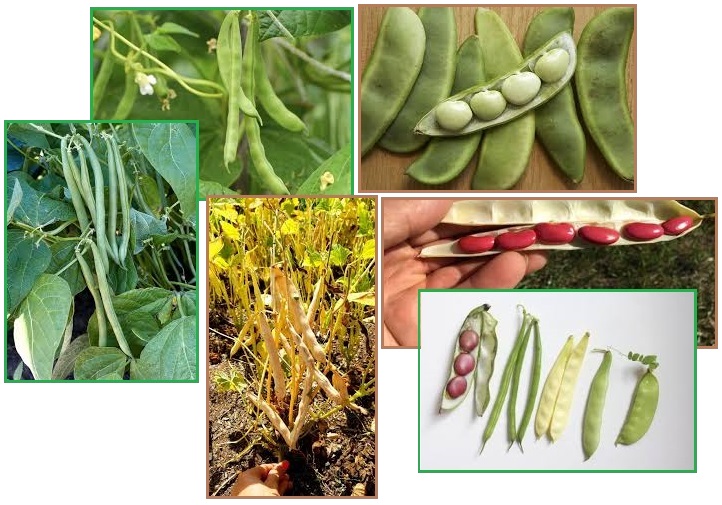
Perhaps the easiest garden vegies to grow are Beans and Legumes, and every culture has recipes for them. Delicious, satisfying, and a bit of protein too. Once again make sure the seeds you harvest are very dry. Allow the plant to literally die from old age to ensure maturity. One technique to get every last bit of nutrition to the seeds is to hang the plant upside down, draining the nutrients to the seeds. Beans are a hot weather plant, and if you plant when the soil is wet and cool the seed may molder in the ground.
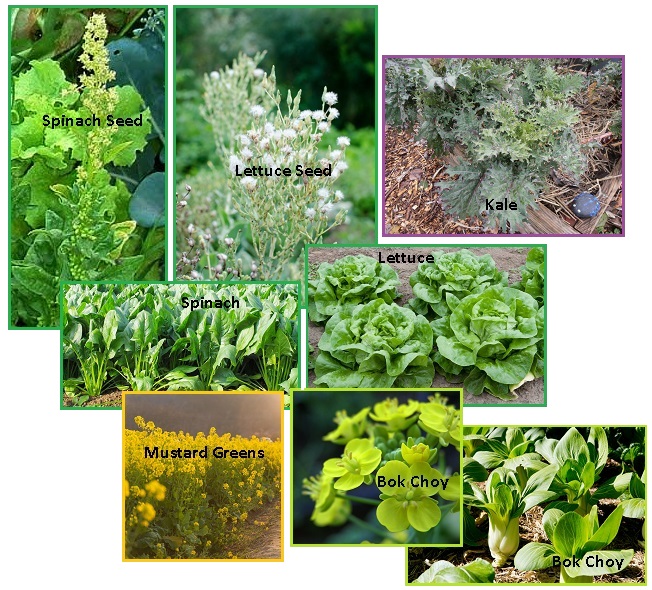
Salad greens or vegies to stir-fry or steam are also mostly annuals, meaning they go to seed in their first year. This category includes Lettuce, Spinach, Bok Choy, Mustard Greens and Kale. Always collect seed from your best plants, passing along their good genetics in this way. Lettuce is among those plants that continually go to seed. One day you see a fluffy white flower with immature seeds within, and a couple days later this same flower has blown away in the wind. Harvest regularly. Spinach is a bi-sexual plant, meaning one must have male and female plants to produce fertile seeds. Harvest when the seed is mature and dry.
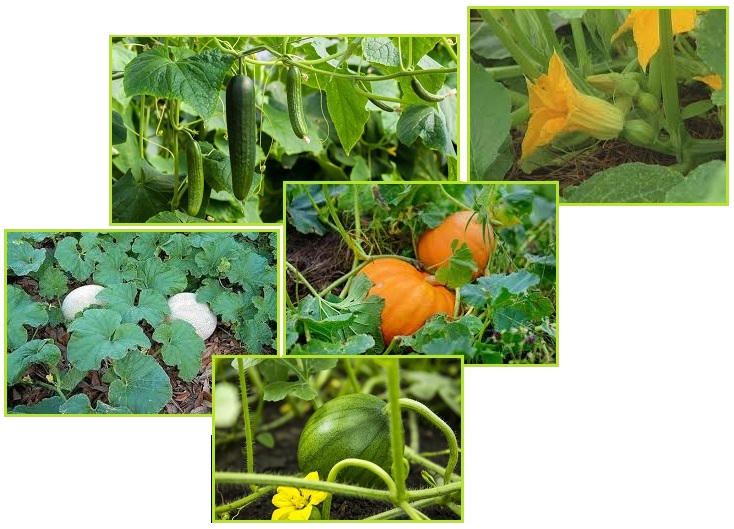
Melons, Squash, Cucumbers and Pumpkin are all fruits. Their yellow flowers turn into the fruit after the flower has been fertilized. In these days when bee colonies can be killed off, allow all the other fertilizing insects to flourish. Ants, sweat bees, anything that is crawling or buzzing around. They are your friends. Winter Squash and Pumpkin are superior foods to store in a cool cellar. They last for months and months. When collecting seed from plants in this category, take from a very ripe fruit, almost to the rotting point. Rinse the pulp from the seeds, dry thoroughly, and store in a cool dry place.
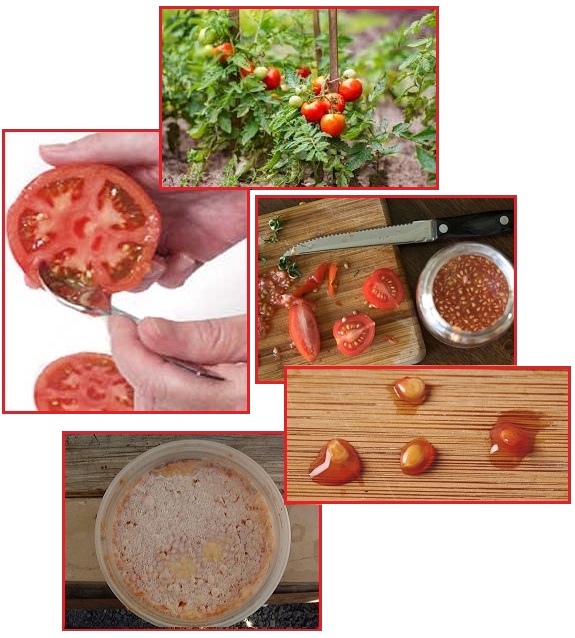
Tomatoes, and Tomato sauces, are so intrinsic to meals in so many cultures they deserve their own spot on the seed saving discussion, especially since effective seed saving requires an odd practice. One must molder the seeds, to rid the seeds of the slime that surrounds them inside the ripening Tomato. But can’t you just rinse off the slime? Apparently, that will not work. Even rinsed and dried, the Tomato seed still thinks it is in the Tomato! So one must put the slimy seeds into a bowl with a little water, and let sit until the bowl is covered with white mold. The slime is eaten by mold. Then rinse, letting the heavy mature seeds sink to the bottom of the bowl and the chaff and mold flow off the top of the bowl. Then dry and store for the next year.
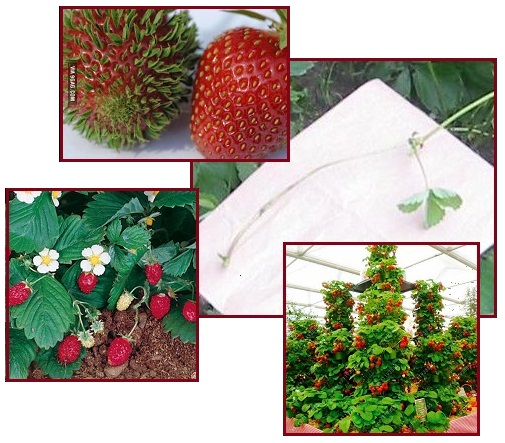
Strawberries also deserve a special mention, because Strawberry plants never die and they never sleep! Seriously, they will grow and produce berries 24 hours every day if given light. Thus making them ideal for indoor gardens. They will also survive harsh Winters, living on as a perennial. Strawberries also have multiple ways of reproducing. They produce runners, with tiny Strawberry plants at the end of each runner, seeking to put down roots. Strawberries are covered on the outside by little seeds. If in a warm humid environment, these seeds will sprout while still on the Strawberry. One can take a slice off a store bought Strawberry, lay that slice on some moist dirt, and voilà. Baby Strawberry plants.
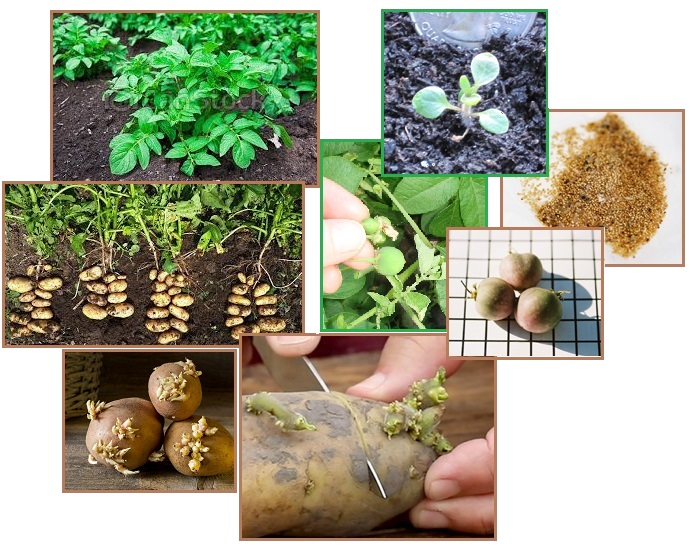
Potatoes also deserve a special mention, as what meal is complete without Potatoes. Potatoes are usually grown from cutting up old Potatoes that have been stored in the cool room, so that each eye on a Potato has a portion of the Potato to give it strength to grow. A bag of Potatoes in the kitchen will start to sprout from the eyes. They don’t wait to be asked. Potatoes can also be grown from the seed pods they produce. Dry the pods well, and break them open to release the tiny seeds. Of course this takes more time than planting Potato eyes.
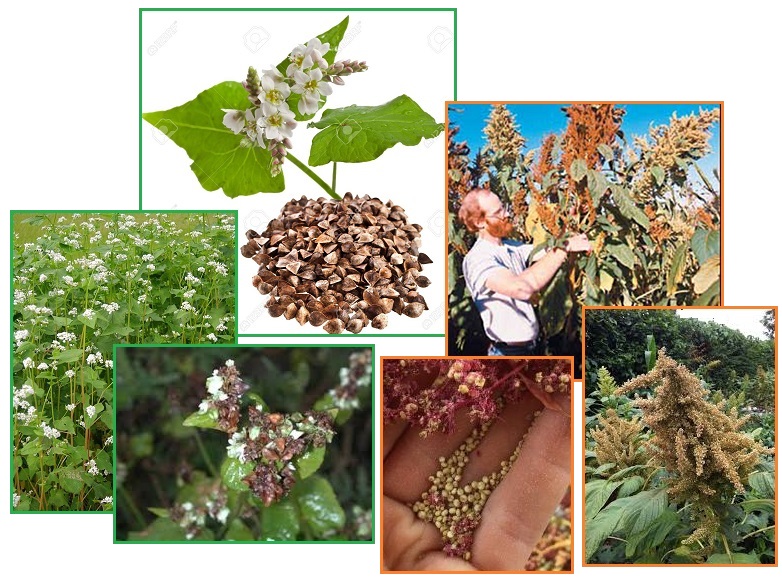
Lysine rich plants like Amaranth and Buckwheat also deserve a special mention, as growing them allows you to replace meat protein with plant protein. Amaranth and Corn mixed together gives one the equivalent of red meat. Legume plants such as Peas also are high in lysine. These plants are annuals, so one only needs to collect the seed and plant the next year. Buckwheat seed stays with the flower pod and is easy to collect. The Amaranth plant is entirely edible, and the leaves are just as nutritious as the seeds. The seed plumes shed ripe seeds continuously, so most would be lost unless one goes down the row regularly and shakes the plume into an apron or sack. The tiny seeds are long lived. An ancient S American plant which is a gift to mankind.
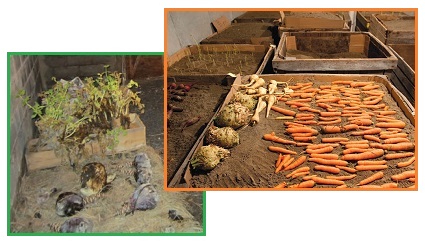
Almost half of the vegetables we eat are not annuals, they are biennial seed producers, meaning they grow the first year, go dormant over what is assumed to be a Winter, and then produce seed the second year. The Cabbage family, Carrots, Beets, and the Onion family including Leeks – all are biennials. This means covering the plant with straw if in a temperate climate that does not get a hard frost, or digging some seed stock plants up and storing them in a root cellar. Seed production is prolific, so many plants are not needed. The plants so stored need the roots, with some soil or sand around them, but do not need much vegetation above the roots.
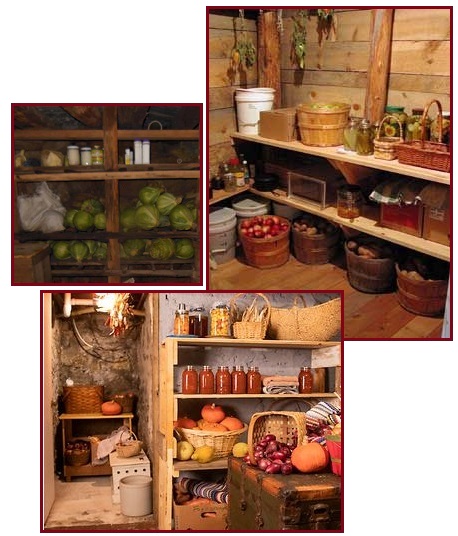
The term Root Cellar is old fashioned, from the days when seed collection was a family business, or a family farm business. Everyone did it. The Amish today rely heavily on Cabbage as a staple. But using the basement or a cool room to store a harvest over the Winter is likewise an old fashioned concept. The modern shopper goes to the grocery store to buy Squash, Pumpkin, Apples, Potatoes, and Cabbage. The Grocer ships these in from warehouses that store these items at cool temperatures. So if you have a Cool Room in your basement, then that can be used as a Root Cellar too.
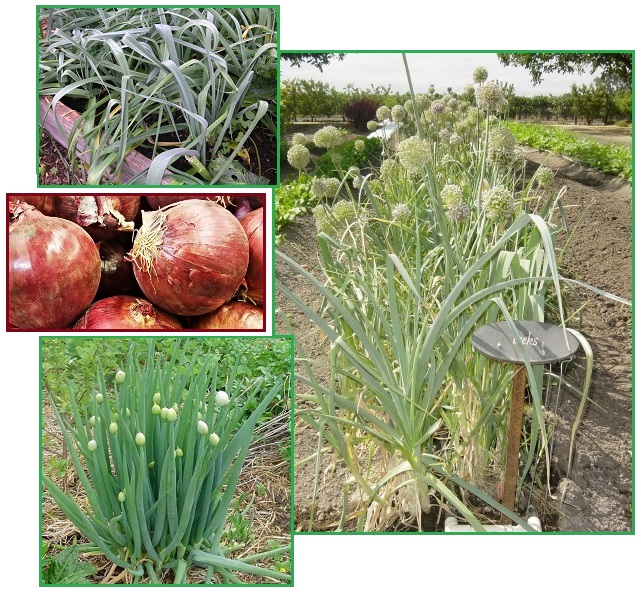
Onions are a biennial, so must winter over for seed. Each Onion will produce beautiful white flower balls that become seed pods. Just let dry and then shuck the little black seeds out. Leeks likewise. Only the Gypsy Onion plant can winter over and attempts to propagate by runners. Garlic has been domesticated so long that its seed is often no longer viable. But Garlic can produce black seeds from its flowers. An alternate means of propagating is reproduction from cloves. Plant a clove in the spring, and by late Fall that clove will have become a Garlic bunch.
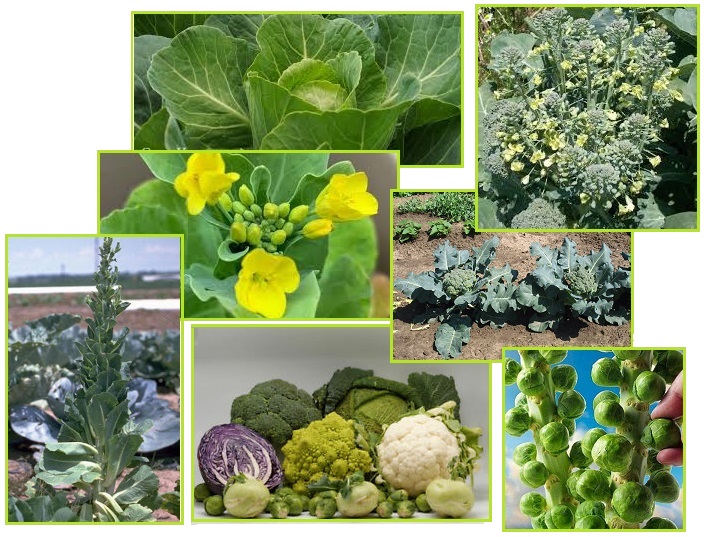
All Cabbage is biennial except for Bok Choy, the Chinese Cabbage that is an annual. Green Cabbage, Brussels Sprouts, Broccoli, Cauliflower – all must Winter over. Bring a few healthy plants indoors, with roots attached, and cut back or prune the tops. Keep roots covered in a cool dark place until spring. Transplant outside in the Spring and up will come the seed stalks with little yellow flowers. Harvest the pods when dry, putting inside a cloth bag to dry. Do not allow the dry pods to shatter and spill the seed.
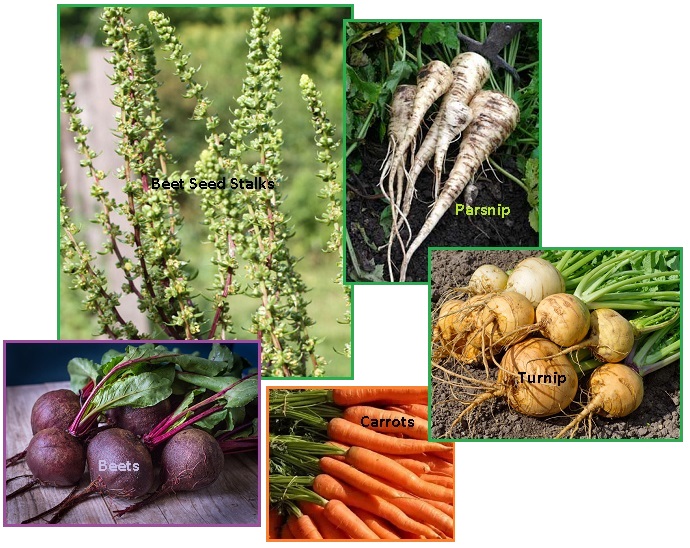
Carrots, Turnip, Beets, and Parsnip are root plants that are also biennials. Beets are particularly nutritious and are prolific seed producers. Radish also needs to Winter over. When transplanting in the Spring, make sure the entire root is covered. Other popular vegies that are biennial are the Chards and Celery.
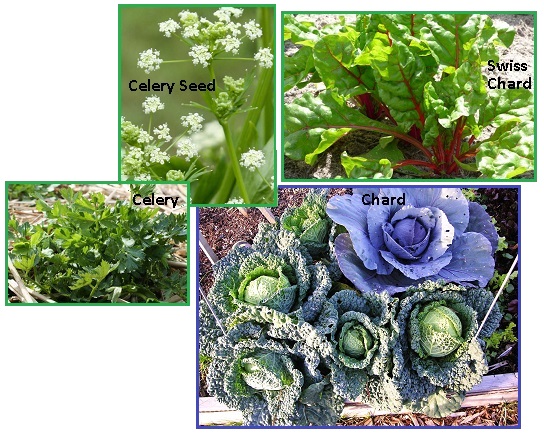
What have we not covered? Oh yes, the perennials. Plants that do not die after a year, like the annuals, or die after their second year when they go to seed, are called perennials. The Rhubarb patch, famous for Rhubarb pie, and the Asparagus patch. Horseradish, Ginger Root, and Artichoke are all perennial once established. These plants do produce seed, but a gardener normally establishes a patch by getting a chunk of the plant, with well-established roots, from a vendor or neighbor.
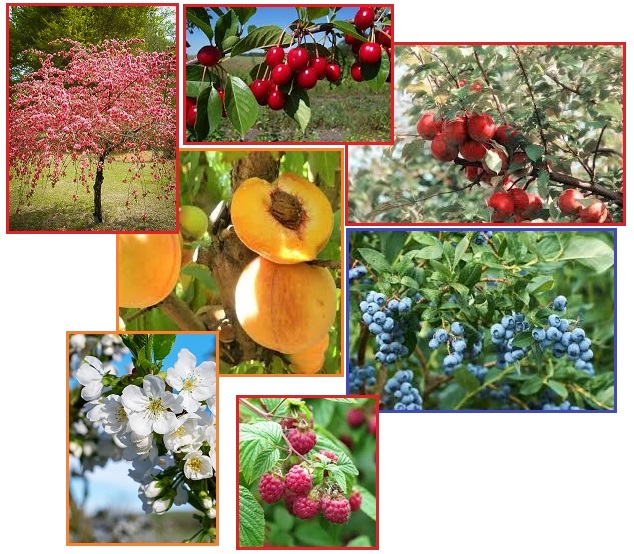
Berry bushes, like Raspberry, Blueberry, or Blackberry are also perennials. They lob over branches that are called vines that will produce new plants where they touch the ground, thus the infamous berry thicket. Aggressive pruning of deadwood is required to prevent a thicket from forming. Fruit trees like Apple, Peach, Cherry and Plum can be established from seed, salvaged from the fruit sold at the grocer, or by buying young trees from a vendor. They are covered in flowers in the Spring, and each flower becomes a fruit. Nut trees likewise can be established in this manner.
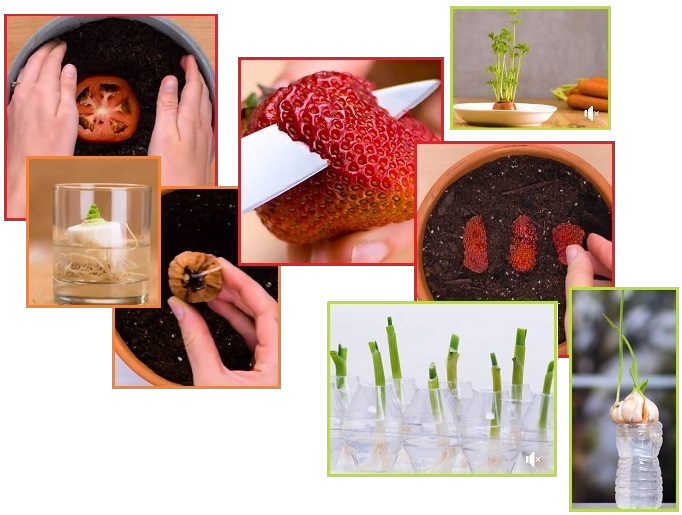
If you find yourself in a situation where you cannot buy seed, as many found this past Spring during the pandemic lockdowns, then consider jumping into seed saving by planting a cutting from the grocer. Get a bag of soil and jump start your gardening skills. Cloning goes by many names, such as cuttings. To reproduce a Grape vine, cut a stem and put the bottom part in water. Rooting solution helps to encourage this process, but technically not needed. Roots form on the bottom and then the cutting is planted. One can start a Strawberry patch from a slice of a Strawberry. Or get seed from some Green Onions placed in water. Or root a Garlic clove or a piece of Potato. Then from this living plant, seed production can start.
SEARCH PS Ning or Zetatalk
Nancy Lieder, Emissary of the Zetas.
https://poleshift.ning.com/xn/detail/3863141:Comment:1168188
Awakening to the Alien Presence ZetaTalk
The truth will likely never to be known to the public but be washed away in the Nibiru panic soon to engulf the world.
The Worst of the Cover-Up
https://poleshift.ning.com/profiles/blogs/the-worst-of-the-cover-up
Main Establishment Lies
https://poleshift.ning.com/profiles/blogs/main-establishment-lies
Donate
© 2025 Created by 0nin2migqvl32.
Powered by
![]()
You need to be a member of Earth Changes and the Pole Shift to add comments!
Join Earth Changes and the Pole Shift